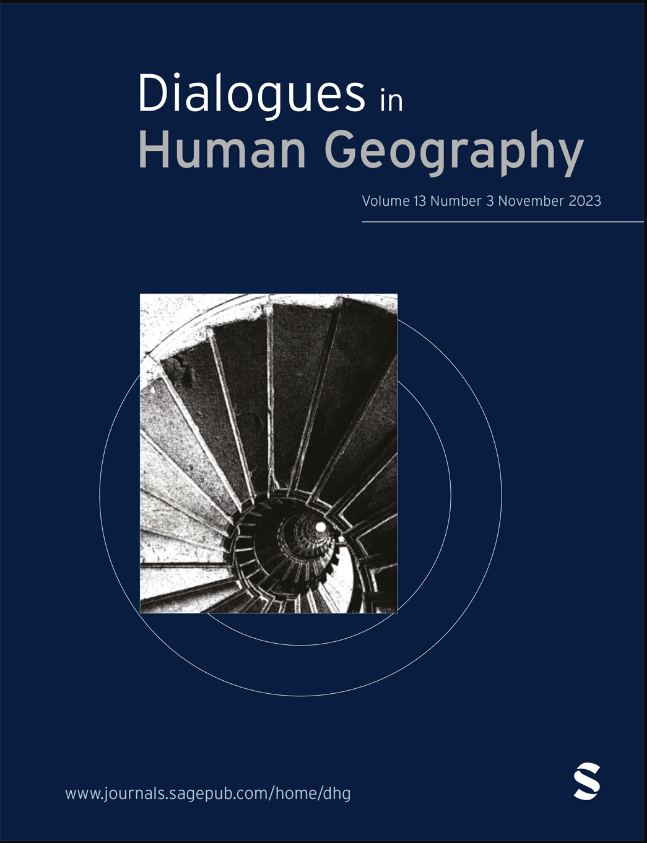Decentring whiteness in engaging Muslim geographies
IF 8.2
1区 社会学
Q1 GEOGRAPHY
引用次数: 1
Abstract
In this commentary, I read Sidaway's ‘Beyond the Decolonial: Critical Muslim Geographies’ as an invitation to engage in alternative cartographies and lateral engagements with what Islam (broadly and complexly conceived) might say to the discipline. In doing so, I build upon Sidaway's invitation to suggest a deeper engagement with the complexity of already existing Islamic geographical traditions and scholarship on Muslim spatialities by pulling out two themes that echo some of those raised in the main article: (1) Islamic traditions of mapping and cartography, and (2) scholarship on Islam and the city. The central aim of my response, however, is to push for different entry points when considering the decolonial possibilities of Muslim geographies rather than an entry point of dismissal from disciplinary geography. Only by decentring the whiteness of the discipline as the starting point, can Islamic traditions of geography be engaged on their own terms, as complex, evolving, contextual, and at times perhaps problematic.在吸引穆斯林的地理环境中贬低白人
在这篇评论中,我阅读了Sidaway的《超越非殖民化:关键的穆斯林地理学》,作为一种邀请,让我参与到另一种地图绘制和伊斯兰教(广泛而复杂的概念)可能对这门学科说的话的横向接触中。在此过程中,我以Sidaway的邀请为基础,提出了对现有伊斯兰地理传统和穆斯林空间性学术的复杂性的更深层次的参与,并提出了两个主题,这些主题与主要文章中提出的一些主题相呼应:(1)伊斯兰测绘和制图的传统,(2)伊斯兰和城市的学术。然而,我的回应的中心目标是,在考虑穆斯林地理学的非殖民化可能性时,推动不同的切入点,而不是从学科地理学中解雇的切入点。只有将学科的白化作为出发点,伊斯兰传统的地理学才能以自己的方式进行研究,因为它是复杂的、不断发展的、有背景的,有时可能是有问题的。
本文章由计算机程序翻译,如有差异,请以英文原文为准。
求助全文
约1分钟内获得全文
求助全文
来源期刊

Dialogues in Human Geography
GEOGRAPHY-
CiteScore
8.00
自引率
4.00%
发文量
86
期刊介绍:
Dialogues in Human Geography aims to foster open and critical debate on the philosophical, methodological, and pedagogical underpinnings of geographic thought and practice. The journal publishes articles, accompanied by responses, that critique current thinking and practice while charting future directions for geographic thought, empirical research, and pedagogy. Dialogues is theoretically oriented, forward-looking, and seeks to publish original and innovative work that expands the boundaries of geographical theory, practice, and pedagogy through a unique format of open peer commentary. This format encourages engaged dialogue. The journal's scope encompasses the broader agenda of human geography within the context of social sciences, humanities, and environmental sciences, as well as specific ideas, debates, and practices within disciplinary subfields. It is relevant and useful to those interested in all aspects of the discipline.
 求助内容:
求助内容: 应助结果提醒方式:
应助结果提醒方式:


